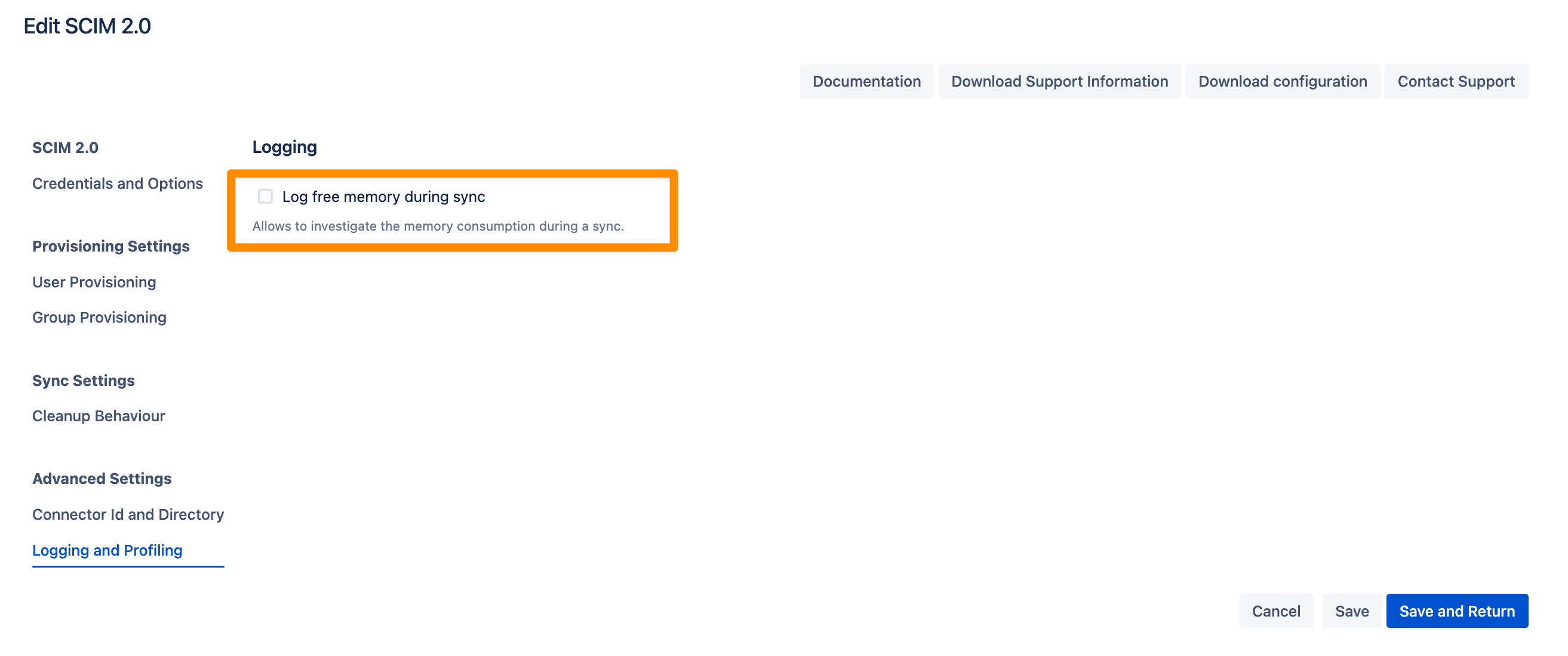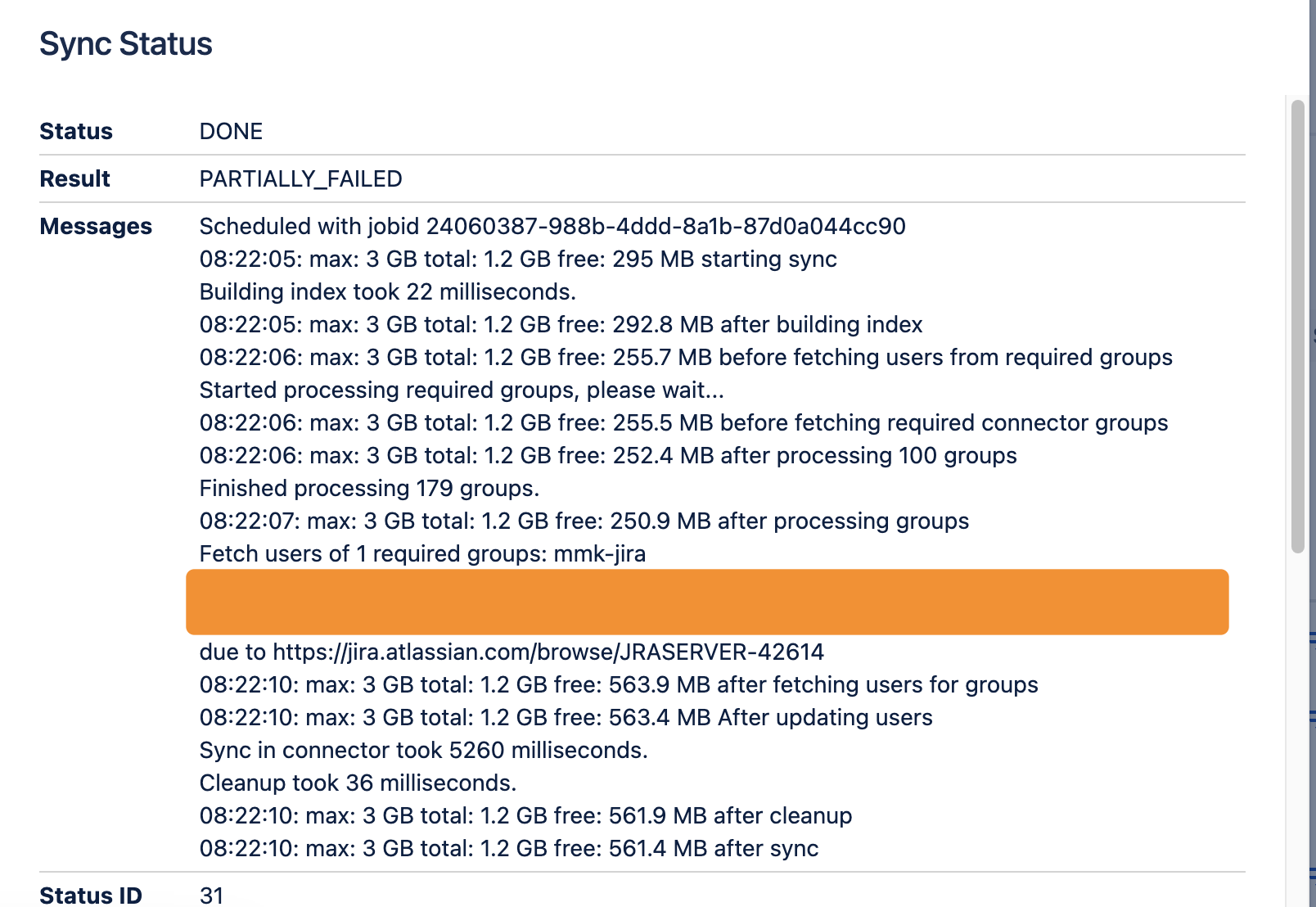Oracle Identity Cloud Service SCIM 2.0 configuration
User Sync Configuration
Go to your Atlassian product and navigate to the User & Group Sync settings. Click Create Connector and choose SCIM 2.0.
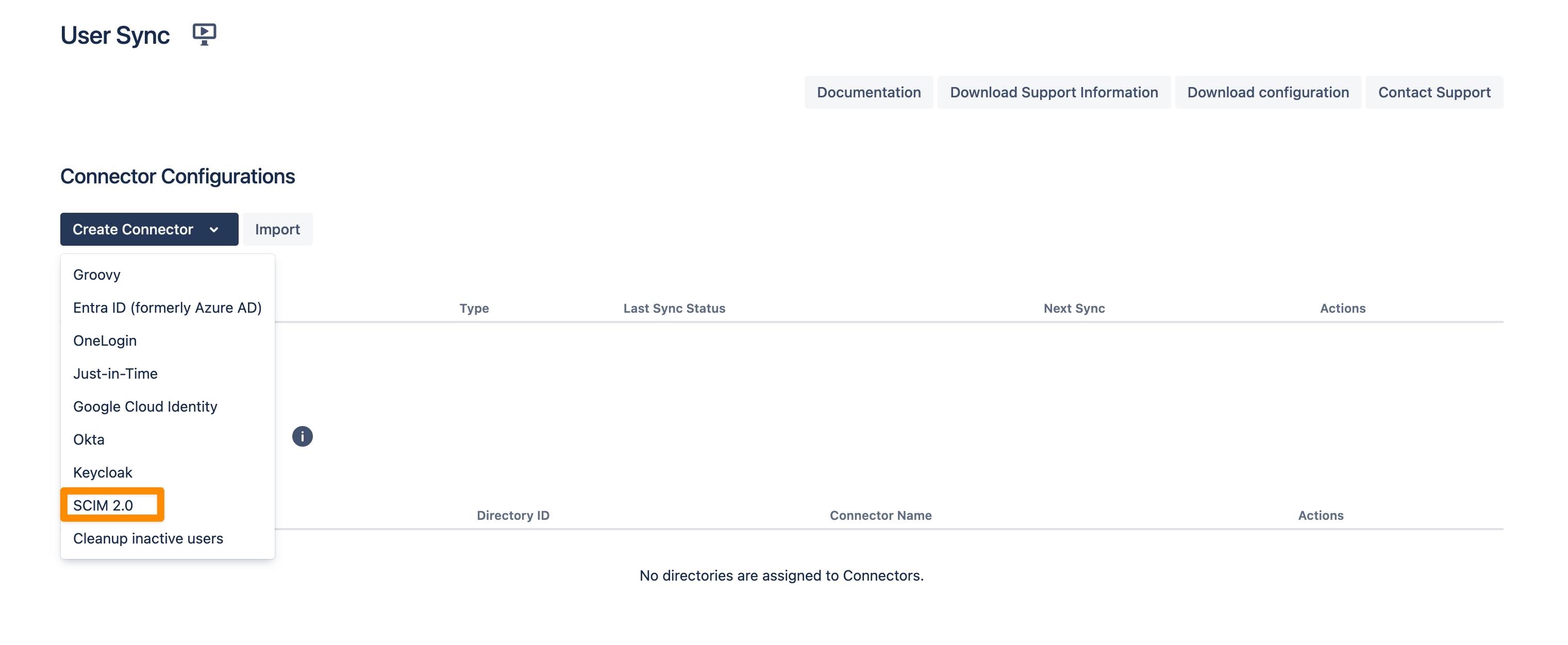
You can change the Name of your SCIM 2.0 Connector. Copy the SCIM Base URL and the Bearer Token. We will need both later for the configuration of the IdP SCIM application.
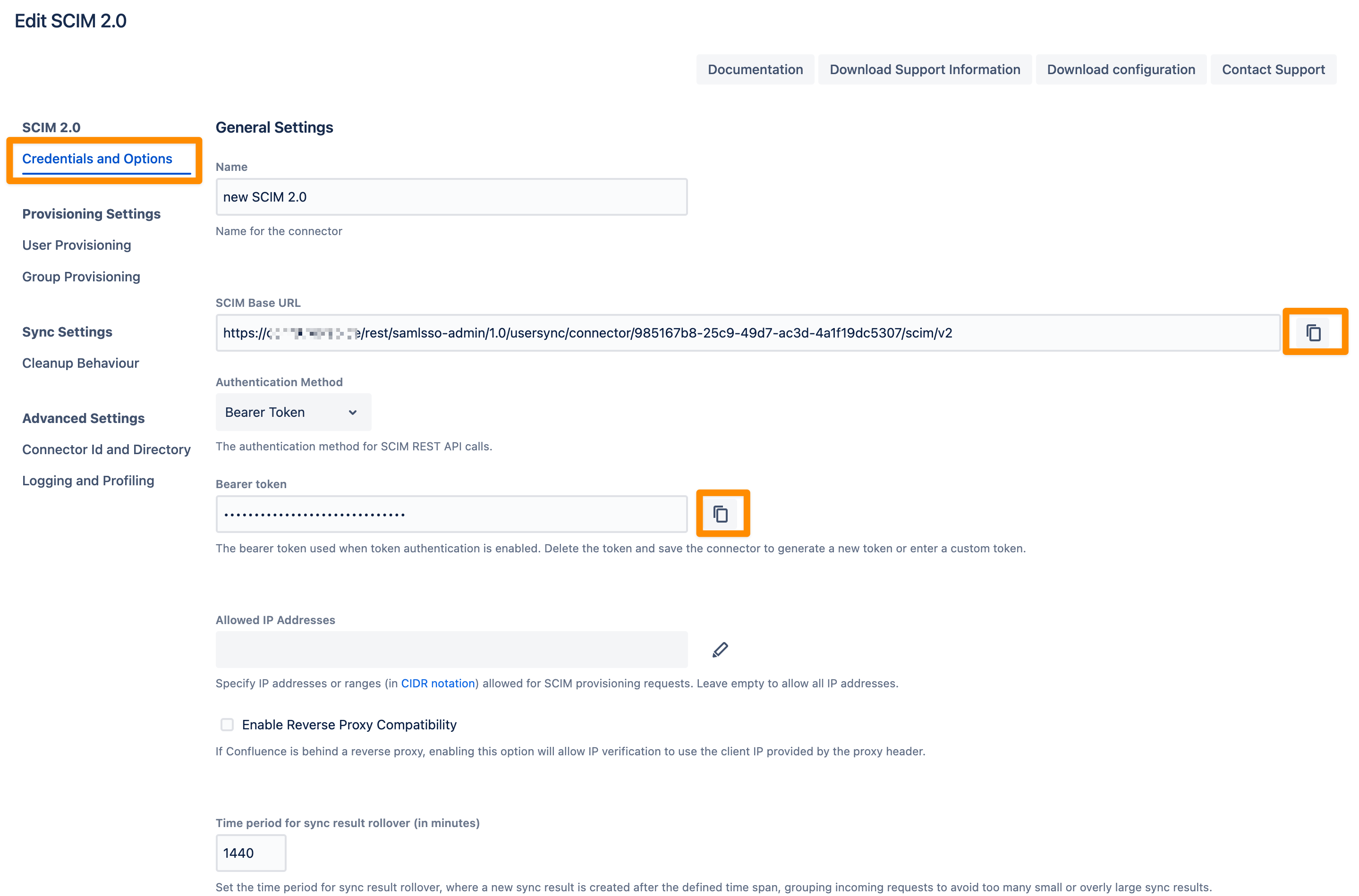
Don't forget to save "Save and Return" your settings!
We will have a look at the 'Provisioning' and 'Sync' settings later. However, first, we create an Application (SCIM client) in your Oracle Cloud.
Oracle Identity Cloud Service Configuration
Log in to your Oracle Identity Cloud Service and add a new Application (click Applications).
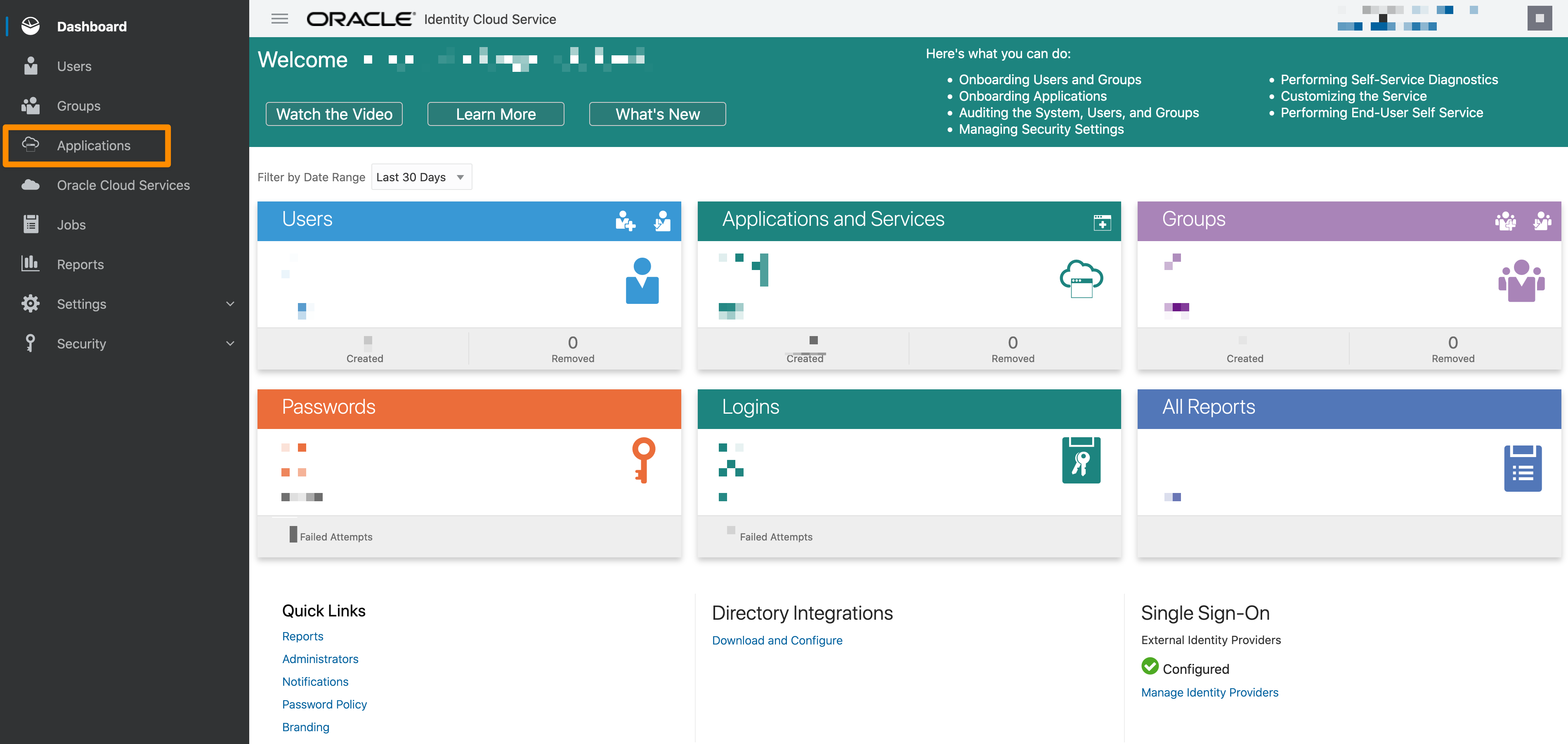
Next, hover over +Add and click App Catalog.
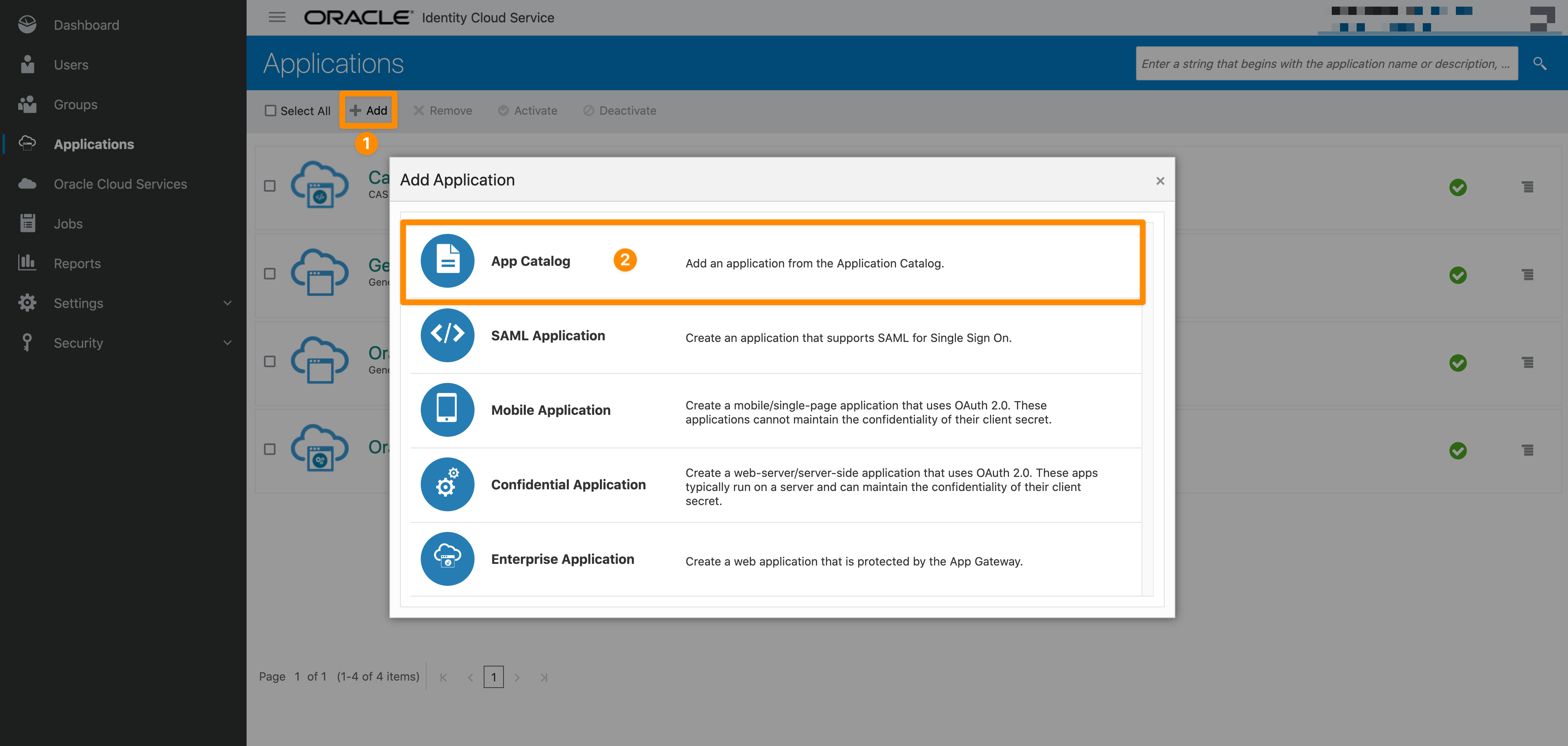
Then, start a search with the string 'generic' and add 'GenericScim - Bearer Token' as a new Application.
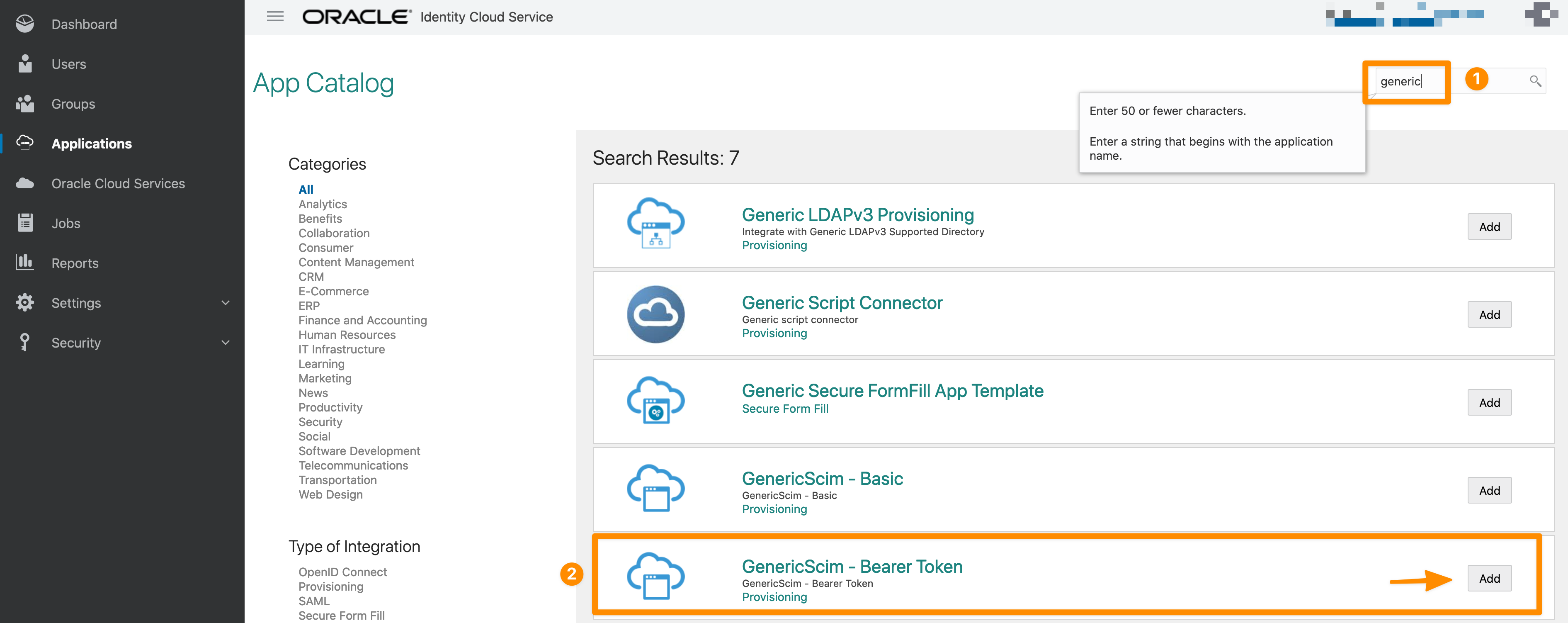
Please provide a Name and add a Description if needed. Click Next to continue.

Enable Provisioning to create or delete accounts.

Now, we need to add the following:
Host Name: your Atlassian Server base-URL (without https://)
Base URI: SCIM Base URL (without https://)
User Sync SCIM 2.0 Connector specific Settings page
Access Token: Bearer token
User Sync SCIM 2.0 Connector specific Settings page
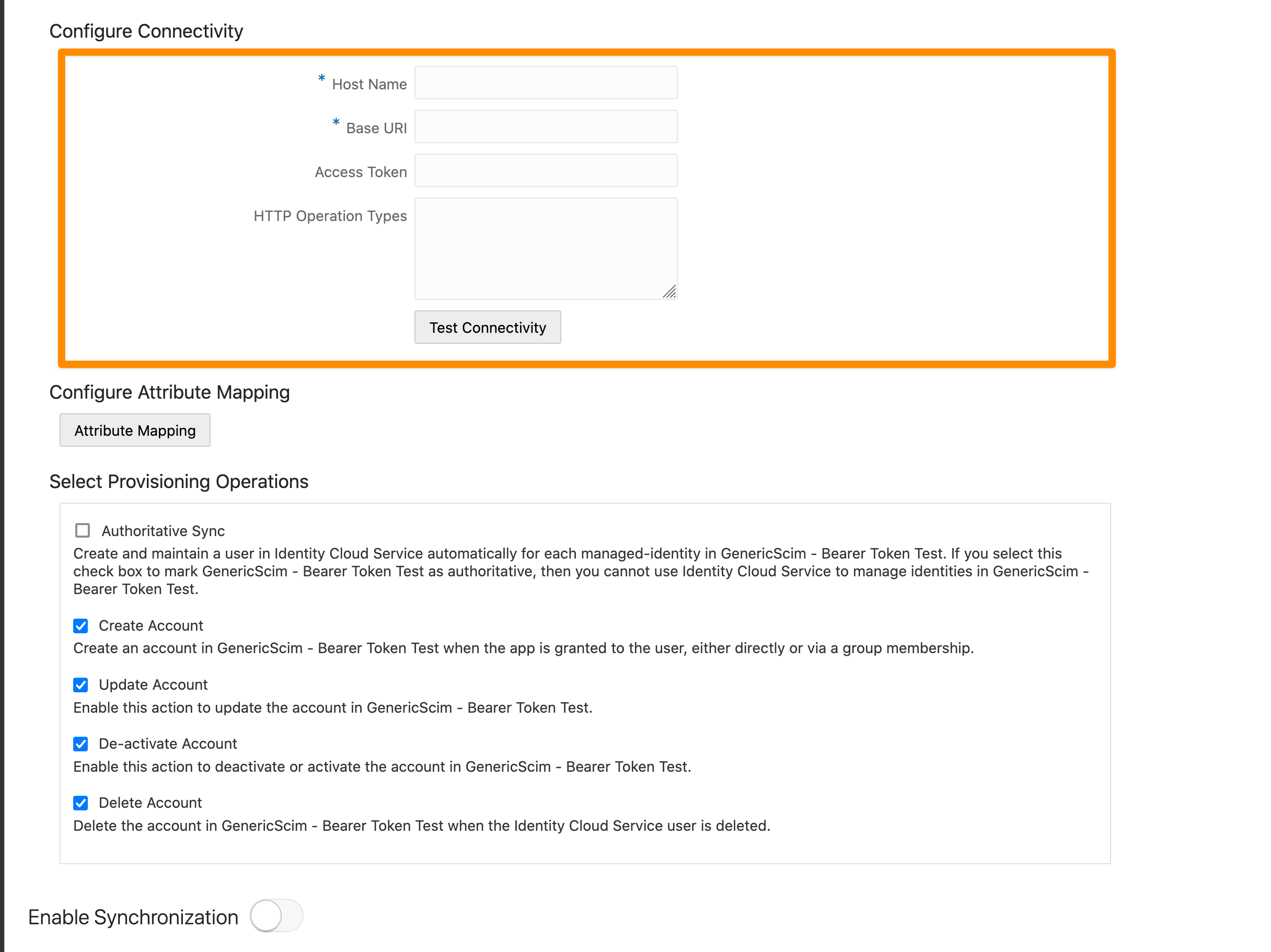
Please do a test via 'Test Connectivity'.
After a successful test, you can configure the Attribute Mapping (Configure Attribute Mapping → Attribute Mapping). You can map Identity Cloud Service attributes to attributes in your Application Account. In most cases, the default mapping is fine as is and should not be changed.
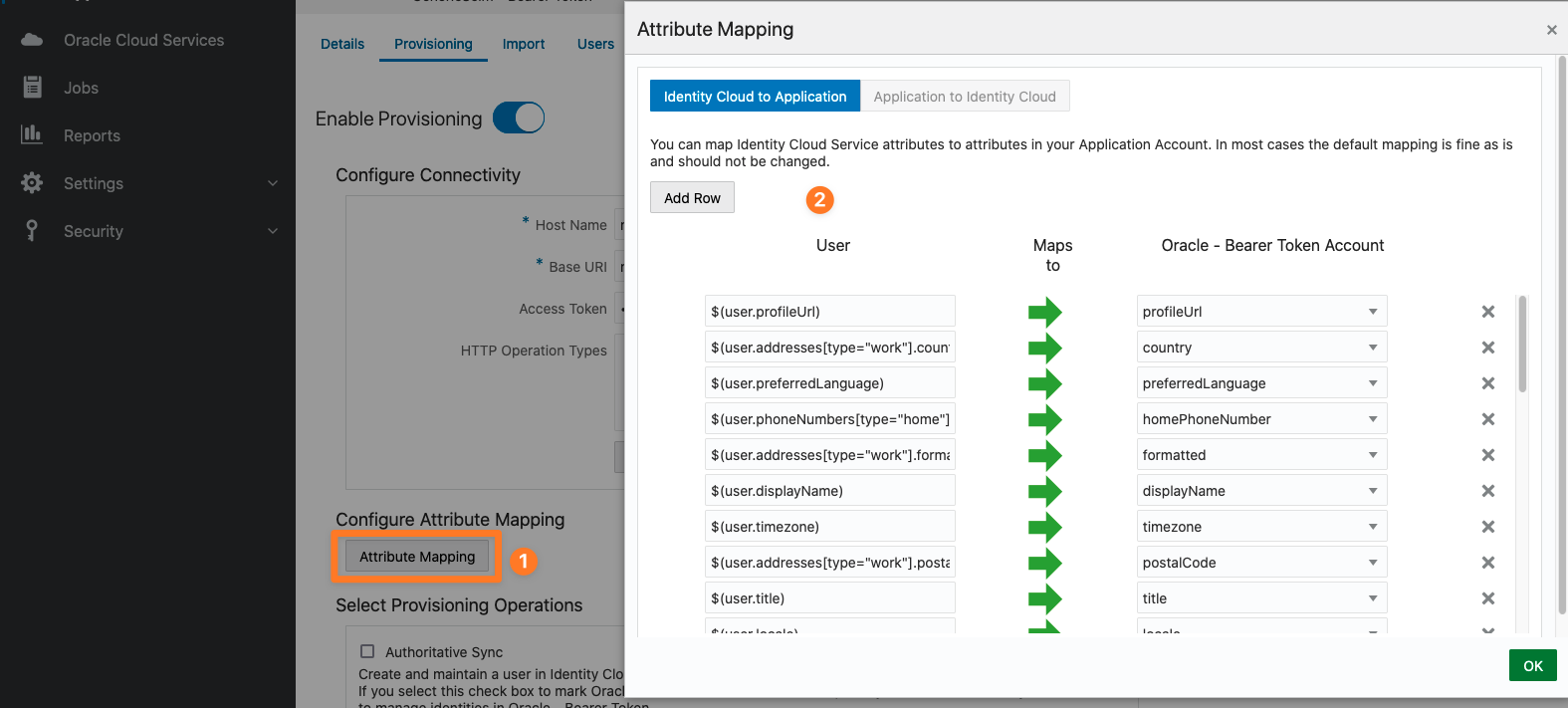
Please enable Synchronization this allows you to control how operations like creating and deleting accounts in Software as a Service (SaaS) applications are reflected in Oracle Identity Cloud Service.
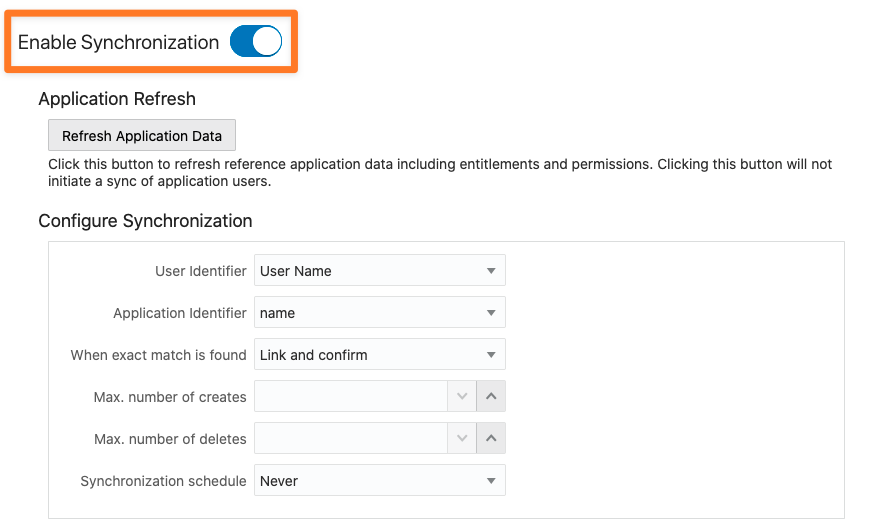
Custom applications are non-Oracle Public Cloud (OPC) services. You can modify custom applications by assigning users to them. To assign a User or a Group to your SCIM application, please go to Users and/or Groups and assign the necessary users/groups.
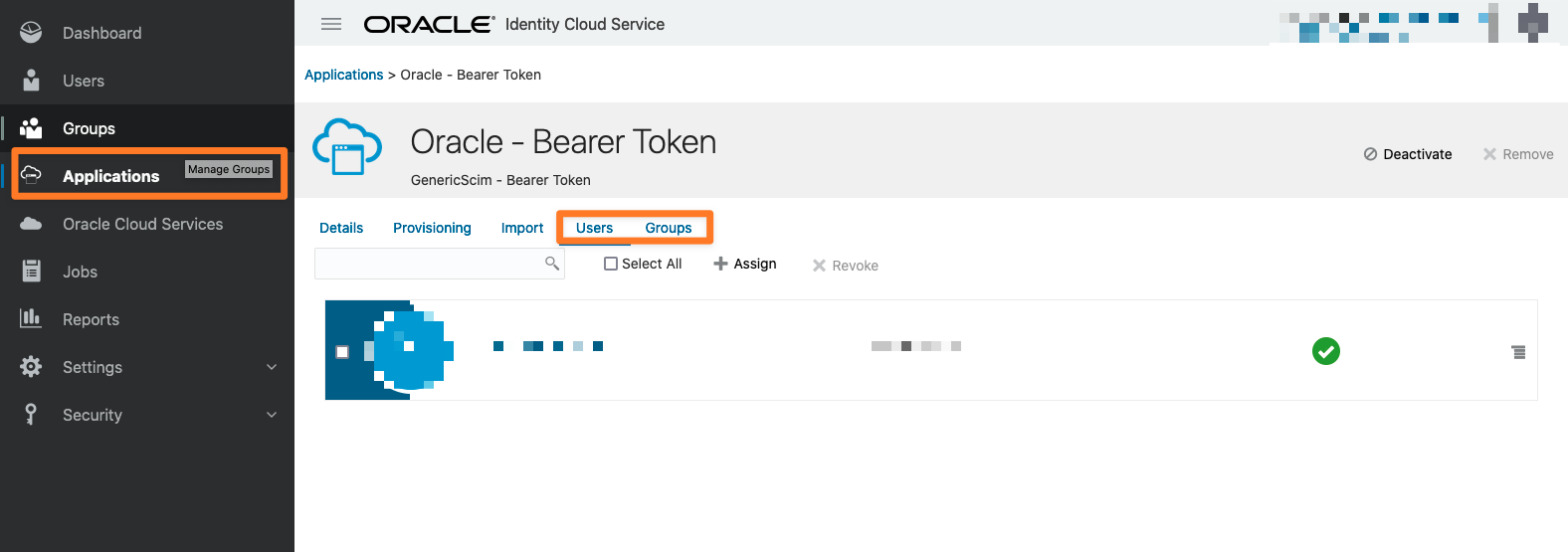
Don't forget to Activate the application, once it gets created.
Back to our SCIM 2.0 User Sync Connector. Let's have a look at the Provisioning Settings tab first.
You can configure three main sections in the User Provisioning settings.
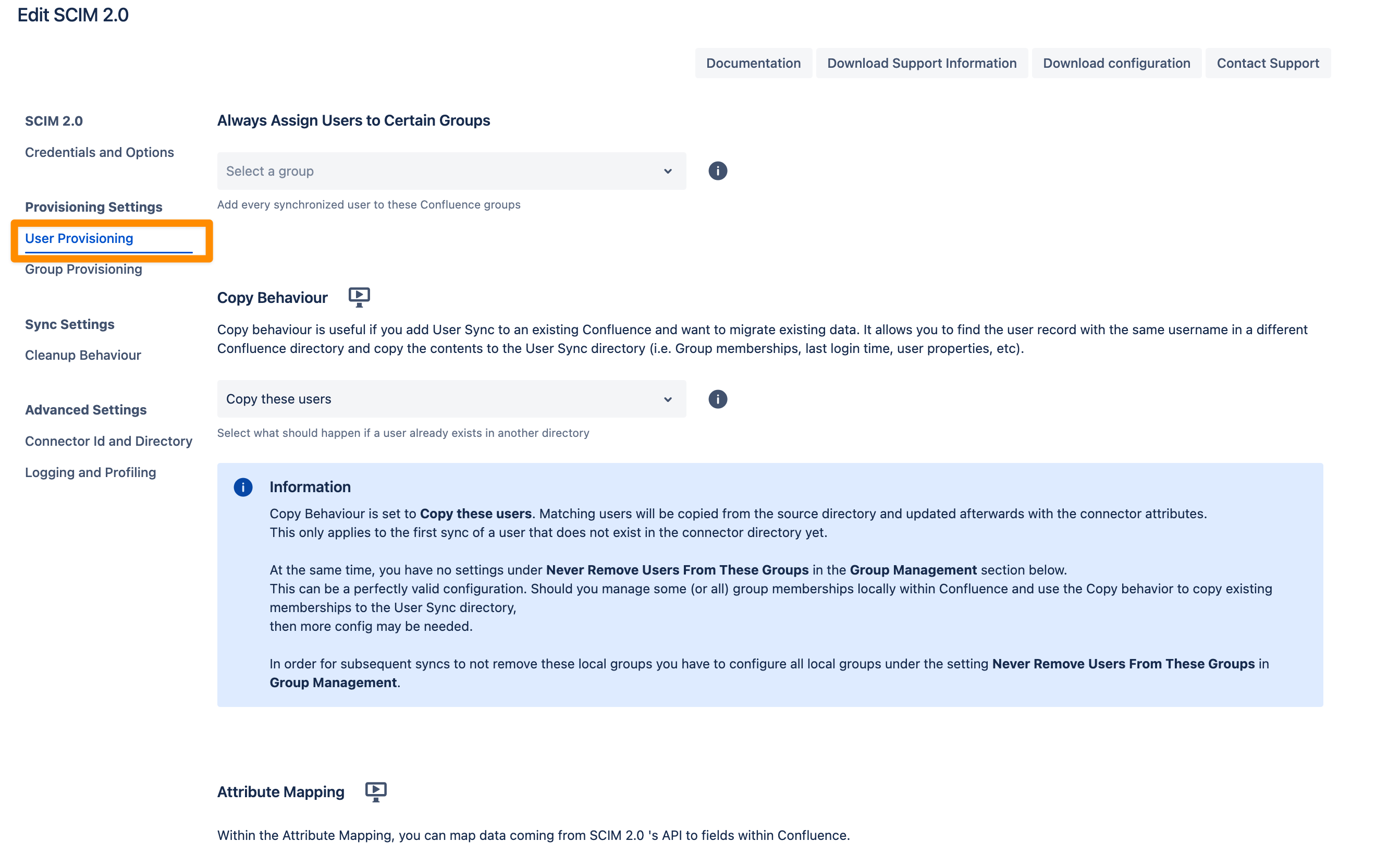
Always assign Users to certain Groups
This setting adds every synchronized user to the specified groups, such as an application access group like jira-users.
Group assignments are re-applied during every sync.
If you manually remove a user from one of these groups, they will be re-added in the next sync.
For more advanced use cases, you can use attribute mapping transformations to customize group assignments.
Copy Behaviour
Copy behavior is helpful when integrating User Sync into an existing Atlassian application (e.g., Jira or Confluence) with pre-existing data.
It identifies user records with the same username in a different application directory.
Relevant data such as group memberships, last login time, and user properties are copied to the User Sync directory.
This ensures smooth data migration while maintaining user information.
Attribute Mapping
Attribute Mapping allows you to map data from SCIM 2.0’s API to fields in your Atlassian application.
Use advanced functions to transform, filter, or modify incoming SCIM 2.0 data before applying it.
This enables greater flexibility when aligning external data with your Atlassian application's structure.
Group Provisioning
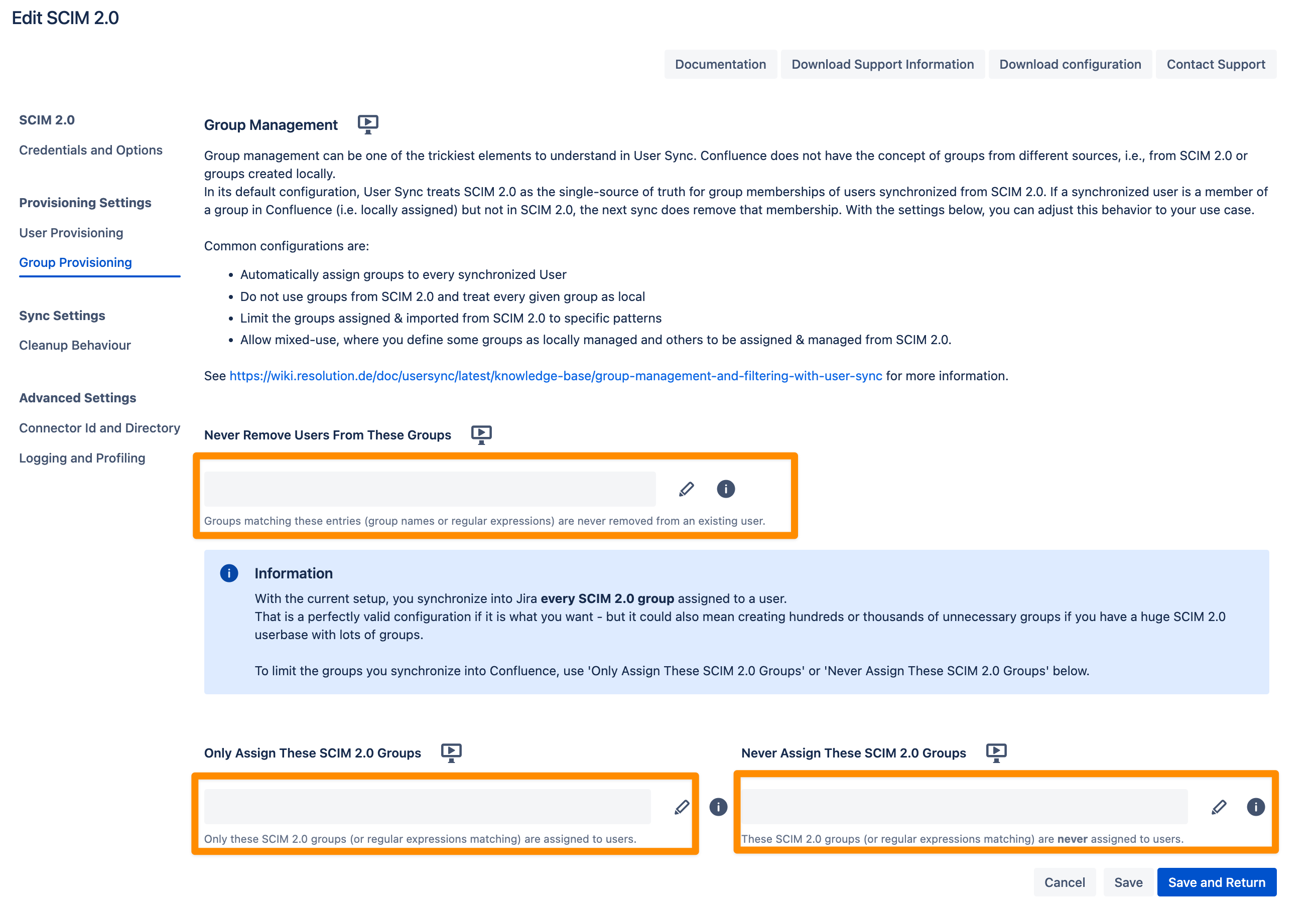
Group management in User Sync can be complex, especially since Atlassian does not differentiate between groups from SCIM 2.0 and locally created groups.
By default, User Sync considers SCIM 2.0 as the single source of truth for group memberships. This means:
If a user synchronized via SCIM 2.0 is assigned to a local group but not to that group in SCIM 2.0, the next sync will remove the local group membership.
To customize this behavior, you can adjust the settings to suit your use case:
Automatically assign groups to every synchronized user.
Ignore SCIM 2.0 groups and treat all groups as local.
Restrict imported groups from SCIM 2.0 using specific patterns.
Mixed group management: Manage some groups locally and others via SCIM 2.0.
These settings allow you to control how the plugin manages groups received from the Identity Provider (IdP):
Never Remove Users from These Groups
Control which groups User Sync will not remove users from, even if the group is not reported by SCIM 2.0.
Use this for groups you manually assign within Jira to ensure they remain intact.
Only Assign These Groups
Specify group names to whitelist groups from the IdP.
Only the groups listed here will be assigned to users; all other groups sent by the IdP will be ignored.
You can use regular expressions to match multiple group names (e.g.,
jira-.*matches all groups starting withjira-).
Never Assign These Groups
Specify group names to blacklist groups from the IdP.
Groups listed here will never be assigned to users; all other groups sent by the IdP will still be assigned.
Regular expressions are supported (e.g.,
jira-.*matches all groups starting withjira-).
Note: You can use both the whitelist (Only Assign These Groups) and blacklist (Never Assign These Groups) options together. In this case:
The plugin will first check the Only Assign These Groups field (whitelist).
Then it will apply the Never Assign These Groups field (blacklist) to exclude any matching groups.
Note
Using .* in "Never Remove Users From These Groups" and .* in "Never Sync These SCIM 2.0 Groups" will synchronize only user data from SCIM 2.0 while excluding all group memberships. This setup functions similarly to a "remote directory with local groups", as seen in Atlassian LDAP connections.
See https://wiki.resolution.de/doc/usersync/latest/knowledge-base/group-management-and-filtering-with-user-sync for more information.
Cleanup Behavior
The Cleanup Behavior allows you to configure what happens to users who were previously synchronized into your Atlassian application but:
Are deleted in SCIM 2.0,
Are no longer members of any required groups, or
Are dropped due to a transformation in the attribute mapping.
By default, the behavior is to disable these users, as recommended by Atlassian.
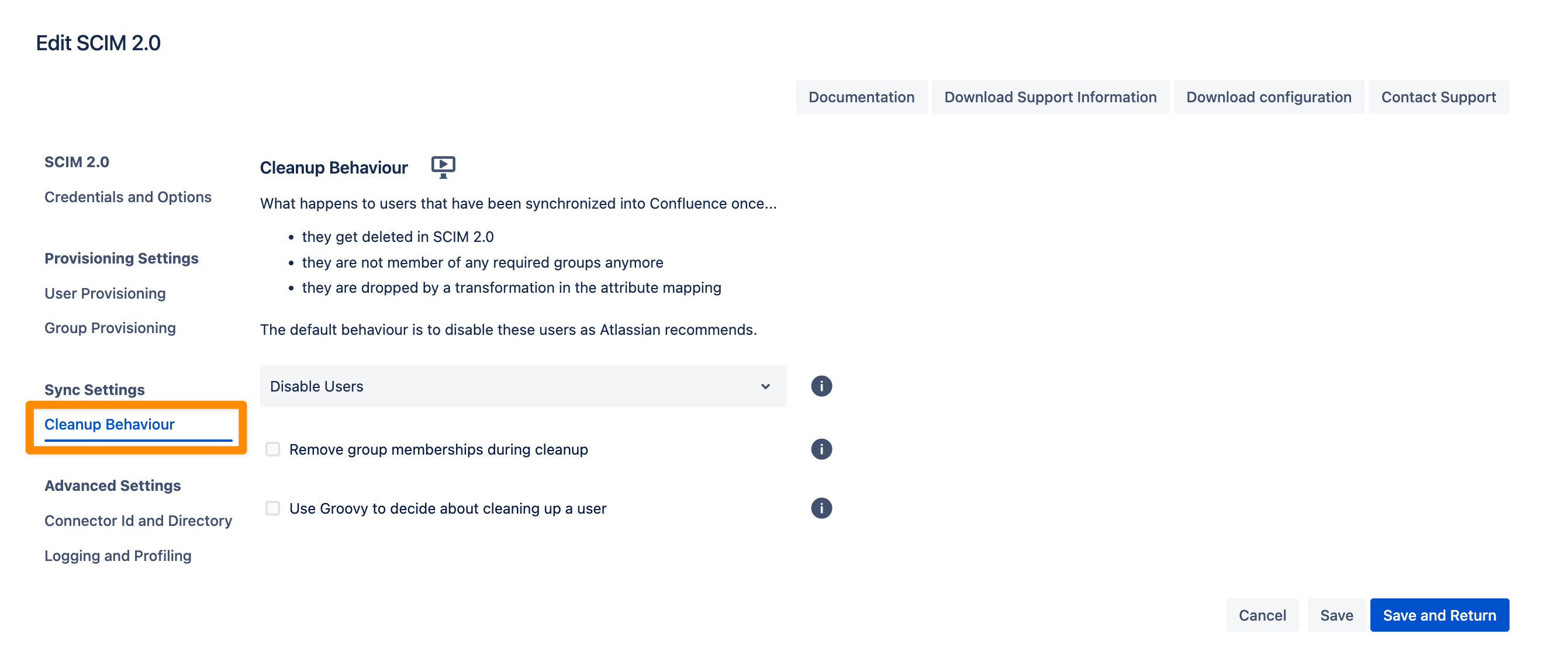
Connector Id and Directory
Below are key details related to the SCIM Connector:
Connector ID: A unique identifier used for REST API calls.
Directory ID: The directory ID used by the SCIM Connector, also applicable for REST API calls.
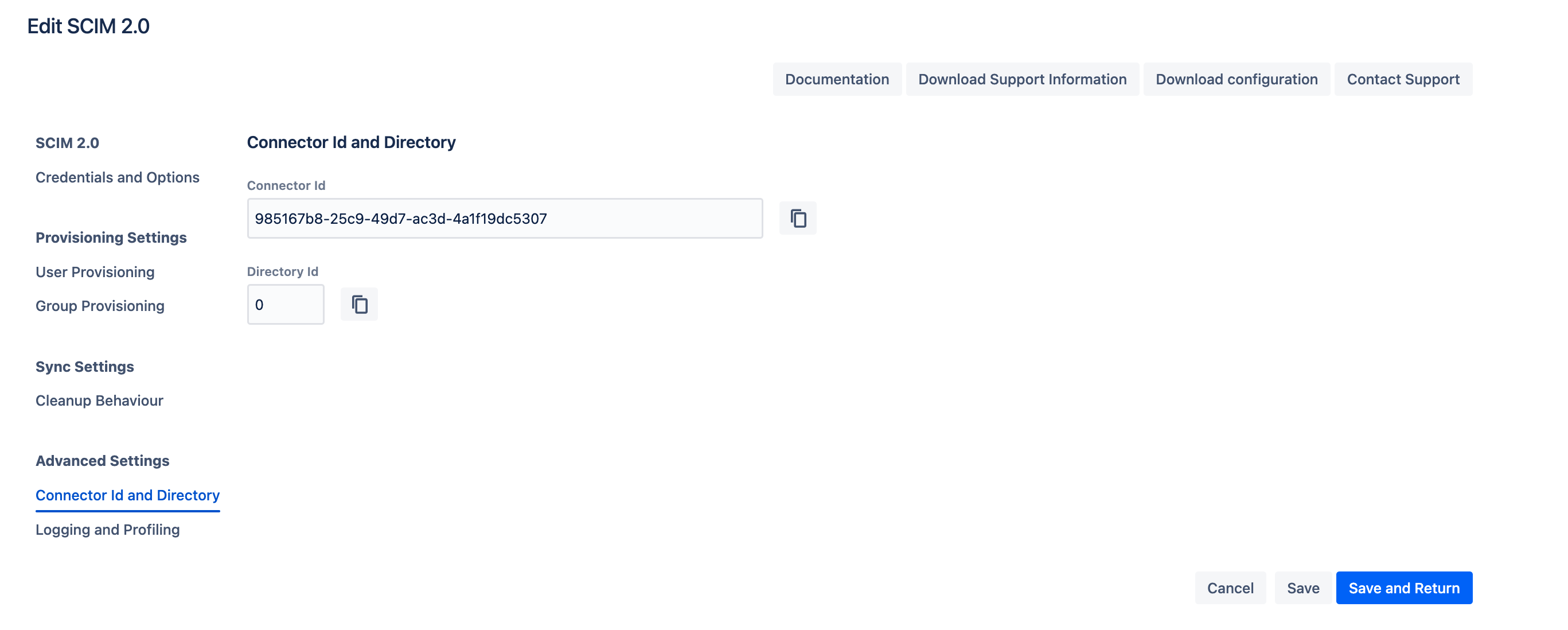
Logging and Profiling
The following setting can assist with troubleshooting:
Log Free Memory During Sync:
When enabled, this option displays the memory consumption and utilization during the sync process. You can view this information in the sync status logs.
